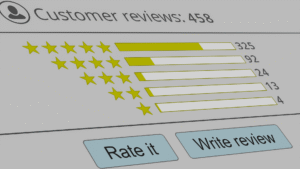Understanding consumer behavior is crucial for businesses aiming to thrive in a competitive marketplace. As we approach 2026, several key trends are shaping the way consumers make purchasing decisions. Among these, the rise of digital-first shopping experiences and the increasing importance of sustainability stand out. These factors are not only influencing individual purchasing choices but are also reshaping entire industries. This article delves into these transformative trends, exploring how they are evolving and what businesses can do to adapt.
The Rise of Digital-First Shopping Experiences
The digital revolution has fundamentally altered consumer behavior, with online shopping becoming a norm rather than an exception. By 2026, the expectation is that the majority of consumers will prefer digital-first shopping experiences. This shift is driven by several factors, including the convenience of online platforms, the expansion of mobile commerce, and the integration of technologies like augmented reality (AR) and artificial intelligence (AI). The convenience of shopping from anywhere at any time without the constraints of physical store hours or locations has been a major pull for consumers. Furthermore, with the increasing penetration of smartphones, mobile commerce is experiencing exponential growth, allowing consumers to make purchases with just a few taps.
Moreover, retailers are investing heavily in technology to enhance the online shopping experience. The use of AI is becoming commonplace in personalizing the consumer journey. AI algorithms analyze browsing and purchasing history to recommend products, creating a tailored shopping experience. Similarly, augmented reality is transforming how consumers interact with products online. Virtual try-ons for clothing, makeup, and even home furnishings allow consumers to make more informed purchasing decisions, reducing the hesitation traditionally associated with online shopping. By 2026, these technologies are expected to become standard features in digital shopping platforms.
Additionally, the rise of social commerce is revolutionizing the way consumers discover and purchase products. Platforms like Instagram, TikTok, and Pinterest have seamlessly integrated shopping features, allowing users to purchase directly through the app. This not only simplifies the purchasing process but also leverages the influence of social media to drive sales. Influencers and peer reviews play a significant role in shaping purchasing decisions, as consumers increasingly trust recommendations from their social circles over traditional advertising. As social commerce continues to grow, businesses must focus on creating engaging and authentic content to capture consumer interest.
Sustainability as a Driving Purchase Factor
Sustainability is becoming a critical factor in consumer decision-making, driven by growing environmental awareness and a desire for ethical consumption. By 2026, it is anticipated that a significant portion of consumers will prioritize sustainability in their purchasing decisions, demanding transparency and accountability from brands. This shift is partly due to increasing awareness of the environmental impact of consumption, including issues like climate change, resource depletion, and waste production. Consumers are becoming more informed and are actively seeking out brands that align with their values, opting for products that are eco-friendly, responsibly sourced, and ethically produced.
Businesses are responding to this trend by adopting sustainable practices and communicating their efforts to consumers. This includes reducing carbon footprints, minimizing waste, and improving supply chain transparency. Many companies are also investing in sustainable packaging solutions and exploring circular economy models to reduce environmental impact. For example, brands are embracing recycled materials and biodegradable packaging to appeal to eco-conscious consumers. By 2026, companies that fail to integrate sustainability into their business models risk being sidelined by their more environmentally responsible competitors.
Moreover, the rise of eco-labels and certifications is providing consumers with the information they need to make informed choices. Labels such as Fair Trade, Organic, and Carbon Neutral are becoming more prevalent, offering assurance of a product’s sustainability credentials. However, as the market becomes saturated with these labels, it is crucial for businesses to maintain credibility. Transparent communication and third-party verification are essential to building trust with consumers. By prioritizing sustainability, businesses not only meet consumer demand but also contribute to a more sustainable future, aligning profitability with responsibility.
As we approach 2026, the landscape of consumer behavior is undergoing significant transformation. The rise of digital-first shopping experiences and the prioritization of sustainability are two pivotal trends that businesses must navigate. Embracing digital innovations and committing to sustainable practices are not just competitive advantages; they are necessary for long-term success. Companies that adapt to these changes will not only satisfy consumer demand but also position themselves as leaders in a rapidly evolving market. Understanding and responding to these trends will be crucial for businesses seeking to thrive in the coming years.
















